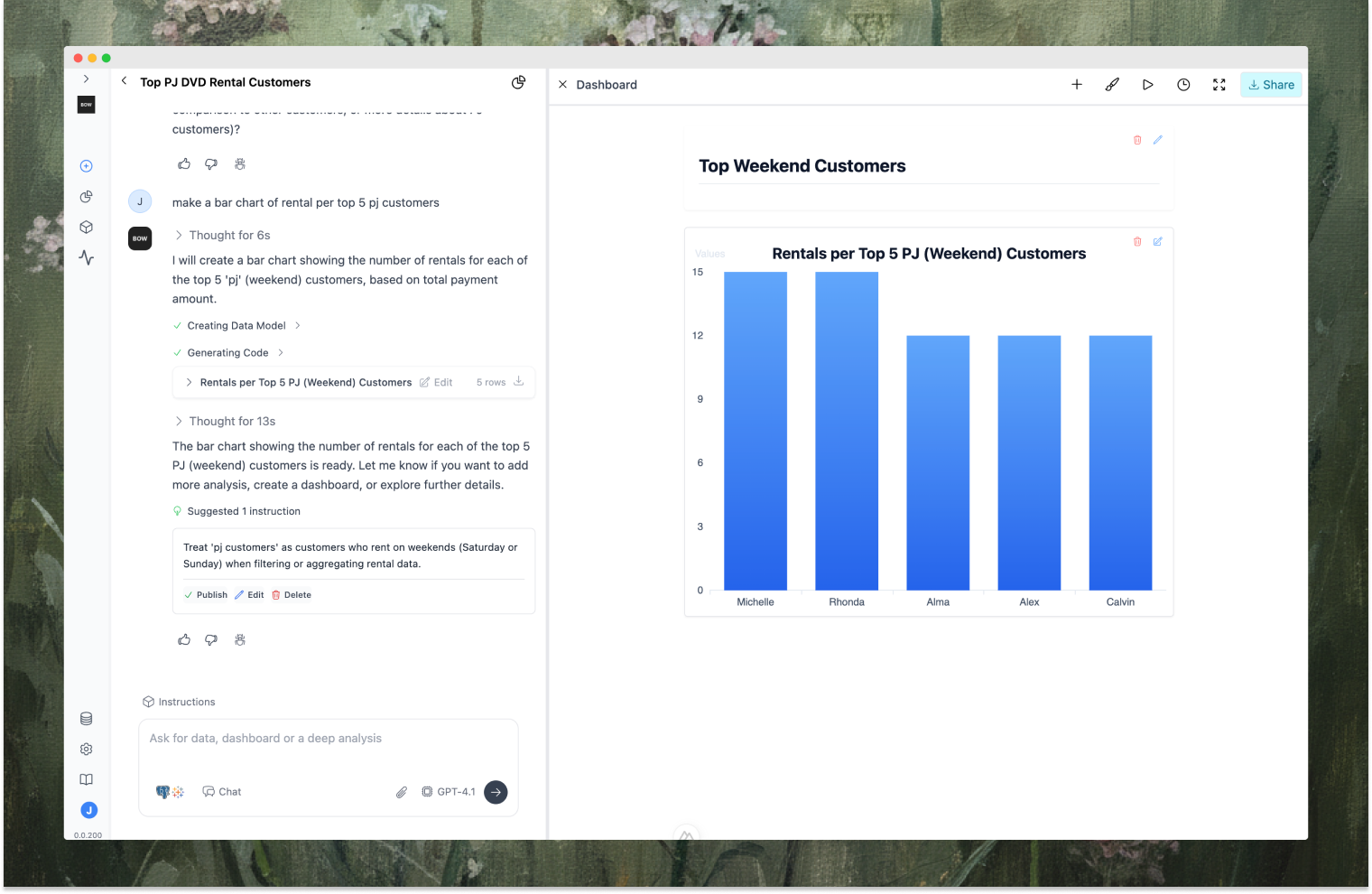
Asking Questions
Type your question in the prompt box and hit enter. The agent will analyze your request, pull relevant context, apply instructions, and return results. There are two main types of prompts:- Query-style: Direct data requests—get specific metrics, aggregations, or breakdowns
- Analysis-style: Open-ended investigations—explore trends, find root causes, or run deep analysis
Query-Style Prompts
Query-Style Prompts
Direct requests for specific data or metrics.Examples:
- “Show me total revenue by month”
- “Who are our top 10 customers by revenue?”
- “What’s the average order value for customers in California?”
- “Compare Q4 2024 sales to Q4 2023”
- “Break down revenue by product category and region”
- “List all active subscriptions expiring this month”
Analysis & Root Cause Prompts
Analysis & Root Cause Prompts
Open-ended investigations that require multi-step reasoning.Examples:
- “Why did sales drop in March?”
- “What’s driving the increase in customer churn?”
- “Analyze user growth trends over the last 6 months”
- “Calculate customer lifetime value by cohort”
- “Find patterns in our highest-value customers”
- “Investigate why conversion rates are declining”
The agent uses your organization’s context—schema, metadata, dbt models, and instructions—to understand your data structure and business logic.
Viewing Results
The agent returns results in multiple formats:- Data tables: Raw query results with sortable columns
- Visualizations: Charts automatically generated based on the data (bar, line, pie, etc.)
- Code: View the SQL or Python code that generated the results
- Explanations: The agent explains its approach and reasoning
- Export data: Download results as CSV or Excel
- Edit code: Modify and re-run the generated code (if enabled in settings)
- Add to dashboard: Save visualizations to a dashboard
- Share: Share the report with your team
Iterating on Results
Reports are conversational. Keep asking follow-up questions to refine your analysis: Example iteration flow:- You: “Show me revenue by month”
- Agent: Returns monthly revenue chart
- You: “Exclude test accounts”
- Agent: Updates query with filter
- You: “Break it down by product category”
- Agent: Adds category dimension
- You: “Only show top 5 categories”
- Agent: Applies TOP 5 filter
How the Agent Works
Behind the scenes, the agent follows a reasoning loop:- Think: Plan the approach based on your question
- Act: Search context, generate queries, create visualizations
- Observe: Check results, validate data model, catch errors
- Reflect: Decide if the request is satisfied or needs another iteration
Tips for Better Results
- Be specific: “Active users in Q4” is better than “users”
- Provide context: “Revenue from subscriptions” vs just “revenue”
- Use business terms: The agent understands your instructions and definitions
- Iterate freely: Refine results through conversation rather than crafting the perfect prompt
- Add instructions: When you clarify something, save it as an instruction for future use
- Check the code: Review generated SQL/Python to understand what’s happening
Selecting Your LLM
Choose your preferred model from the dropdown in the prompt box. Different LLMs have different strengths:- GPT-4.1: Best for complex reasoning and multi-step analysis
- Claude 4 Sonnet: Strong at code generation and following instructions
- Gemini 2.5 Pro: Fast with good balance of quality and speed
- GPT-4.1 Mini: Lightweight for simple queries
